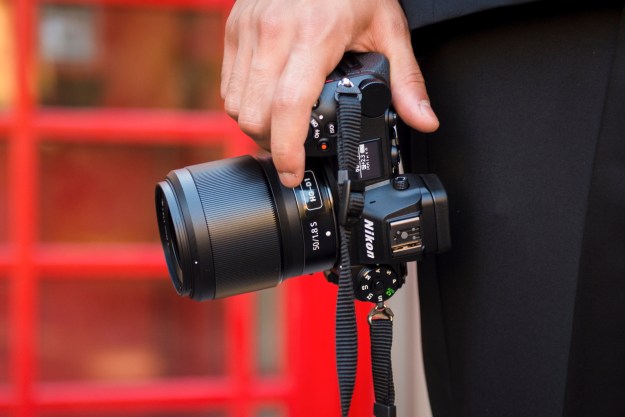Update on February 25, 2014: Additional info on features inserted.
When Nikon announced it was developing a successor to the Nikon D4 at CES last January, it should really have told us that the new D4S is on its way. The company has officially announced the product, with a body-only list price of $6,500 that will be available on March 6. And no, this isn’t for entry-level step-up users; the D4S is a full-frame (35mm) DSLR designed for prosumers and professionals. There aren’t any revolutionary changes from the heralded D4 – even the body remains the same, with very little nip-tuck here and there (such as a more comfortable grip and thumb hold, and new materials used on the subcommand dials) – but this new, faster high-end flagship’s performance enhancements should make a lot of users happy, particularly for those who work with video.
The durable, weather-sealed D4S is still a 16.2-megapixel camera, but it’s using a newly designed 16.2-megapixel FX-format (full frame) sensor, along with the newest Expeed 4 image processor. With the components the camera delivers better dynamic range and low-noise performance, plus improved image quality, color, and sharpness in photos and videos. The Expeed 4 handles real-time noise reduction and depth and clarity gradation rendering, which Nikon says results in wide tonal range with more accurate colors. The processor also pushes ISO up to 409,600 (Hi-4), thanks to a new algorithm for noise reduction and color fidelity, but most users will stick to the native range of 100-25,600 the rest of the time. Image processing time is also faster. Nikon retains the 91,000-pixel RGB 3D Color Matrix Metering III system from the D4, and the D4S offers finer white balance adjustments.
The autofocusing has been enhanced. It’s still a 51-point system, but there’s now a Group AF mode that maintains autofocusing while tracking, and is ideal for tracking small and distant objects. Tracking has also been improved when shooting continuously shooting at 11 frames per second (12 fps with Auto Exposure Lock). The AF Lock-on feature now has a shorter time reverting from focus interruptions – when something enters the frame, it won’t interfere with the AF. And the D4S maintains autofocusing even when you switch from horizontal to vertical.
For those who shoot in Raw, there’s a new Raw Size S format that shoots 12-bit uncompressed Nikon NEF files at half the size of regular Raw. The D4S also has a faster transfer rate when hardwired via Gigabit Ethernet, and better battery life. The dual card slot supports CF and XQD formats. The optical viewfinder also has reduced mirror movement, which allows you to see more of what you’re looking at.
For video, users have the options of 1080 at 60p, 30p, or cinematic 24p, at up to almost 30 minutes per clip in H.264/MPEG-4 AVC; uncompressed 60p video can be outputted to an external recorder via HDMI, while video can be saved simultaneously on either a CF or XQD card. There’s selectable image area when in Live View, audio levels can be adjusted (with an auto frequency range for wide or narrow), and the aforementioned expanded ISO range applies to video as well.
If you like making time-lapse movies, Nikon calls the D4s the “mother of all time-lapse machines.” Able to capture up to 9,999 frames, it has an exposure smoothing feature that evens out drastic exposure changes that occur in time-lapse recordings.
(Originally published on February 24, 2014)
Editors' Recommendations
- Nikon’s flagship and very pricey D6 camera finally starts shipping
- Nikon Z 6 vs. Nikon D780: The family feud in the mirrorless vs. DSLR debate
- Canon EOS-1D X Mark III brings stunning stills and RAW video to an impressive DSLR
- Miss Black Friday? Get a Nikon full-frame camera, lens and grip for under $900
- Nikon gives us our first look at its upcoming D6 professional DSLR


